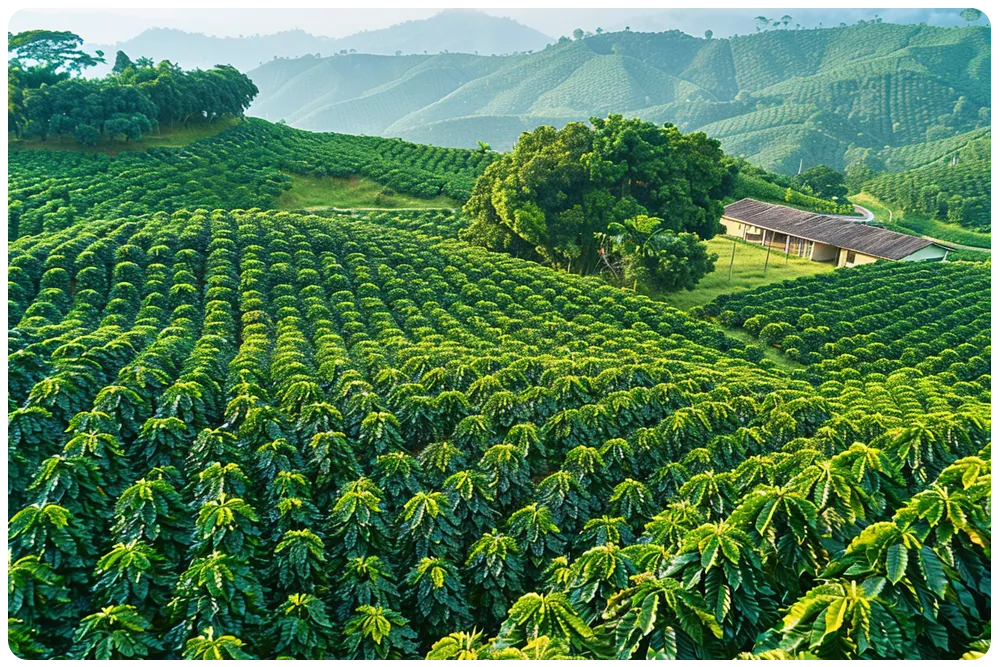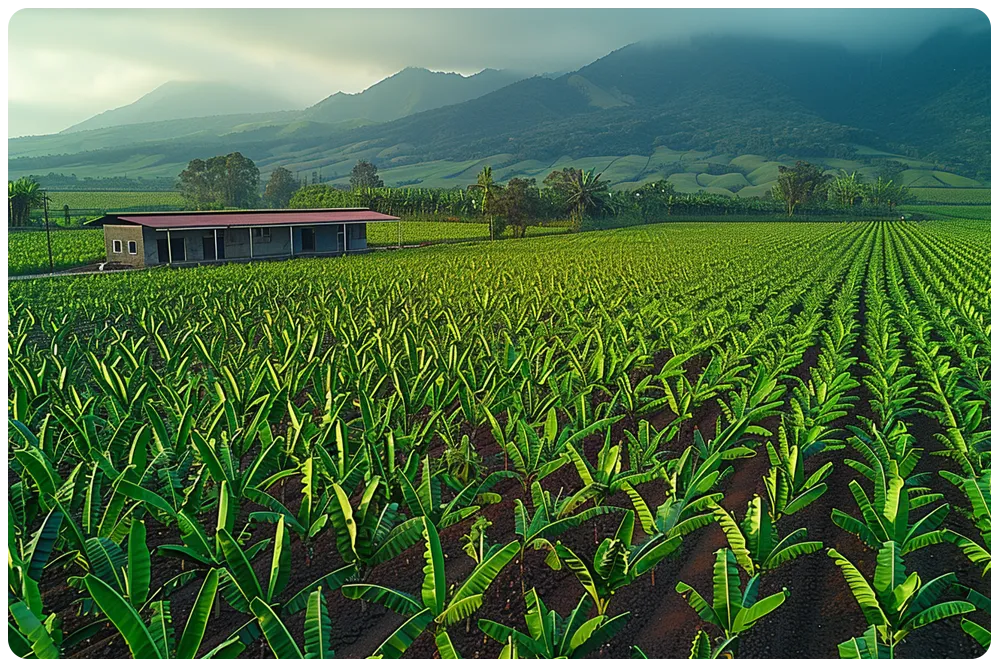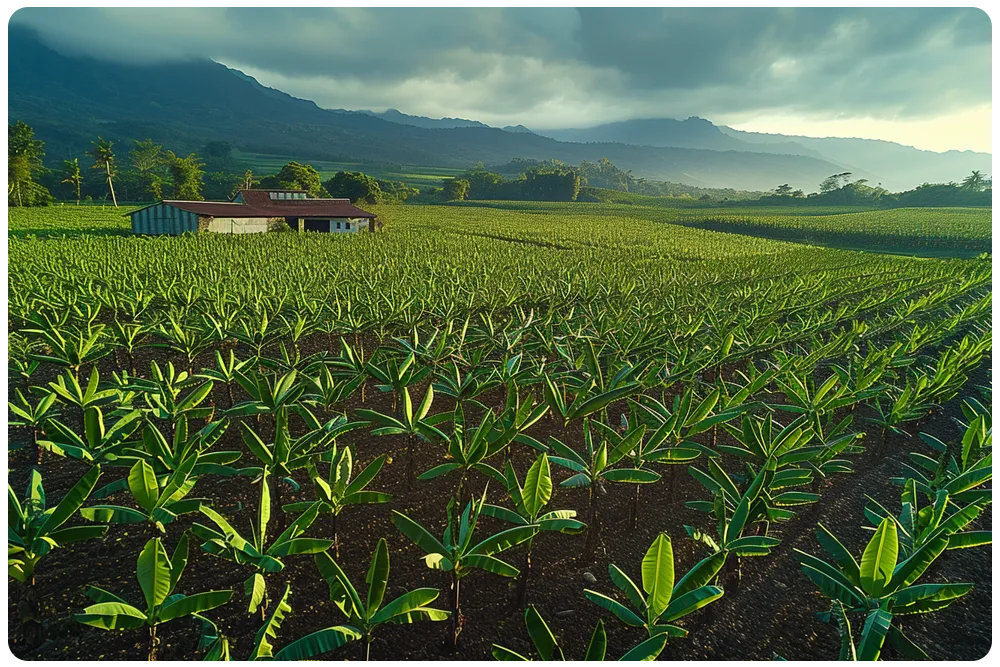Discover the profound impact of drone technology on sustainable farming. Enhance crop production and farm efficiency, empowering farmers to pioneer the future.
Welcome to Drone Farm
We offer a comprehensive range of agricultural drone services. With years of experience, we’ve harnessed our expertise to deliver high-quality services to our clients. Our team provides full support at every stage. Choose us for top-tier Drone Farming experiences!

Contents
- 1. How drones improve sustainable farming?
- 2. Drones foster precision and efficiency in farming
- 3. Role of drones in boosting crop yields
- 4. How drones enhance surveillance in farming fields?
- 5. Drones reduce carbon footprint in agriculture
- 6. Drones contribute to more sustainable farming techniques

1. How drones improve sustainable farming?
In this digital era, drone technology has been a game-changer in sustainable farming, transforming the way we grow, manage and protect our crops. Let’s explore its profound implications and upsides for this sector.
Increased Precision and Efficiency
Drone usage in sustainable farming has skyrocketed in recent years. The precise data they gather from aerial imagery allows for more efficient and sustainable crop and soil management. Principally, the drone can scout expansive agricultural terrains swiftly, supplying crucial data that helps farmers in making informed decisions about irrigation, harvesting times, and pest control.Boosts Crop Yields
Nourishes Sustainable Farming
Unlocks New Opportunities
Sustainable farming is the cornerstone of future agriculture. Here, the drone plays a significant role, revealing opportunities we never imagined a few decades ago. Be it improving the nutritional value of crops, increasing farm biosecurity, or supporting wildlife habitat preservation, the scope for drones in sustainable farming is indeed vast and unending.To sum up, the drone is an invaluable tool for farmers, enhancing efficiency, and driving sustainability in agriculture. As technology evolves, we can expect this revolutionary device to bring forth more groundbreaking changes, shaping the future of sustainable farming.2. Drones foster precision and efficiency in farming
Understanding how drones foster precision and efficiency in farming is key to utilizing them for maximum productivity. There is an incredible range of applications, and the impact on farm management strategies is substantial.
Agricultural drones are transforming how farmers manage their fields and crops. Here, we delve into some of the key benefits of incorporating drone technology into farming operations:
- Improved Crop Health Insight: The drone, equipped with advanced imaging technologies, allows farmers to closely monitor crop health. By capturing high-resolution imagery, it empowers farmers to identify and treat crop illnesses before they affect the overall yield.
- Enhanced Irrigation Management: Drones provide an aerial view of the farm and detect dry areas that need more irrigation. This way, farmers can regulate water usage, ensuring each area receives just the amount it requires.
- Optimized Fertilizer Application: Drones can deliver specific amounts of fertilizer to exact locations on the field, reducing wastage and providing the correct nutrient levels to crops. This contributes to healthier crops while also enhancing sustainability.


3. Role of drones in boosting crop yields
The Eminence of Drones in Dramatically Elevating Crop Yields
Agricultural drone has demonstrated an unparalleled capacity for maximizing the efficiency of farming practices and boosting crop yields. By revolutionizing the approach towards monitoring and managing farmlands, the utilization of a drone has become a cornerstone in modern agriculture. Let’s delve deeper to understand the various ways a drone can enhance the crop production process.
Crafting Efficient Monitoring Strategies
One of the key applications of a drone in agriculture involves the regular scouting and monitoring of crop fields. With higher efficiency than traditional methods, this not only ensures the early detection of potential threats but also allows for immediate rectification measures. Here’s a step-by-step explanation of how this handy tool can be utilized:
- Schedule Regular Flights: Make it a practice to schedule drone flights over your farm at regular intervals, preferably twice a week. The high-resolution imagery captured can provide an overview of crop health and highlight any anomalies.
- Implement Data Analysis: Use advanced software to analyze the data gathered by the drone. This can help identify patterns of crop stress, disease, and pest infestation.
- Take Prompt Actions: Based on the analyses, take immediate remedial action. This could involve targeted pesticide application, irrigation adjustments, or other field management strategies.
Ampiying Crop Yields with Precision Agriculture
By employing a drone for precision agriculture, farmers are able to maximize crop yields and optimize resource utilization. The drone carefully collects data from the fields and performs analyses to make informed decisions. This includes the optimal time for planting, the need for crop rotation, and the right amount of fertilizers and pesticides. Through this precision approach, the drone plays a central role in minimizing waste, lowering costs, and ensuring the abundant yield of quality crops.
Progressional Thoughts on Disease Prevention
A significant advantage a drone brings to farming is the early detection of crop diseases. The high-resolution images captured by a drone can reveal symptoms of illness in specific areas of the crop field that may be missed by the naked eye. Utilizing drones can minimize the impact of diseases on crop production, ensuring sustainable farming practices and high crop yields.
Best Practices for Drones in Farming
To culminate, employing the helping hand of drone technology can sculpt a more fruitful and prosperous future for farming, driving increased efficiency and escalating crop yields. When optimally utilized, a drone could undoubtedly be a sterling match for sustainable farming.
4. How drones enhance surveillance in farming fields?
Agricultural Drones: Enhancing Surveillance and Yield in Farming Fields
With the advent of technology, the agricultural sector is witnessing an evolutionary shift, focusing on sustainable practices that streamline processes and boost productivity. One such influential technology reshaping the agricultural landscape is the “drone.”
Farming drones make holistic surveillance not only possible but effectively efficient. They offer greater field visibility, enabling farmers to meticulously monitor field conditions and crop health. Let’s decode how this happens:
- Detailed Imaging: Equipped with advanced sensors and imaging capabilities, a drone can capture high-resolution aerial images of farming fields. These high-definition photographs provide a broader perspective, unveiling imperfections invisible to the naked eye, such as waterlogging, pests, and weeds.
- Real-Time Data Collection: Drones are adept at real-time data collection, offering comprehensive insights into soil conditions, crop health, and environmental factors. This live data empowers farmers to make informed decisions related to irrigation, fertilization, and crop rotation, fostering the growth of healthier and higher-yielding plants.
- Timely Disease Detection: An often-ignored yet crucial aspect of crop health is early disease detection. Farming drones, with their eagle-eye vision, actively survey the fields, swiftly identifying and alerting farmers about potential diseases and pests. Timely intervention minimizes crop damage, ensuring a more robust and high-yielding harvest.
- Increased Efficiency: Traditionally, field monitoring was time-consuming and labor-intensive. However, thanks to drone technology, farmers can now survey large tracts of land quickly and accurately. This efficiency frees up valuable resources, allowing them to focus on other critical farming tasks.
With the advent of drone farming, a new era of efficacy and sustainability is taking root in the agricultural sphere. Aiding in cost-effective farm management, disease control, crop productivity, and waste reduction, it’s safe to say that the drone is indeed transforming the backbone of our economy – farming.
Note: Proper training and guidance are advised for the appropriate usage of drones in farming fields as misplaced utilization could lead to suboptimal outcomes.


5. Drones reduce carbon footprint in agriculture
Unveiling the Positive Impact of Drones in Sustainable Farming
Heralding a new era in agriculture, the drone has become a potent tool, revolutionizing farming practices, and making a considerable contribution to sustainability. By enhancing crop yields, farm efficiency, and significantly reducing the carbon footprint, these flying marvels offer an effective solution to many challenges in today’s agricultural world.Turbocharging Crop Yields and Farm Efficiency
The applications of a drone in farming can significantly optimize crop production. Drones can ascertain the best planting patterns, optimal sowing times, and monitor crop growth. Through regular aerial surveys, drones can collect data about soil conditions, crop health, water levels, and potential pest attacks. This exercise arms the farmers with valuable insights to ensure timely interventions, thus enhancing crop yield and farm efficiency.
Drones: A Sustainable Solution
The incorporation of a drone in agriculture paves the way for a sustainable future in farming. Instead of tractors churning up the ground, drones can cover extensive areas without causing any direct harm to the environment. This decrease in tractor usage means a significant reduction in fuel consumption, thereby reducing CO2 emissions. Thus, a drone’s application in farming plays a vital role in minimizing agriculture’s carbon footprint.Regular Unmasking of Crop Illnesses
Drones equipped with infrared and multispectral sensors can help detect crop illnesses far before the naked eye can. A drone can accurately pinpoint areas afflicted with diseases, enabling farmers to undertake targeted treatments, thereby curbing the spread of disease, and ensuring healthier crops.
Advantages of Drone Technology in Reduction of Carbon Footprint
- Increased Efficiency: Drone technology significantly boosts farming efficiency, with less time spent on routine checks and more focus on data analysis for strategy formulation.
- Reduced Fuel Usage: With drones replacing many of the tasks traditionally done by tractors, fuel consumption, and consequent CO2 emission decrease substantially.
- Better Crop Health: Regular drone surveillance helps to maintain prime crop health and prevent diseases, thus assuring higher yields.
6. Drones contribute to more sustainable farming techniques
Drones – Engines of Sustainable Farming
Farming has taken a significant turn towards advanced methods in the modern era, and at the forefront of this revolution is the agricultural drone. The drone tends to be more than just an eye in the sky; it’s an essential mechanism that influences every facet of agriculture, improving operational efficiency and boosting crop yields.
Drone: The Farming Ally
The drone is an effective tool for creating sustainable farming methods while making it possible to monitor massive farmlands quite efficiently. By using cutting-edge sensors and digital imaging capacities, a drone can create detailed maps for soil analysis, enabling the farmers to plan their seed planting patterns.
Impact on Efficiency and Yields
The drone has a significant effect on farming sustainability and efficiency. Using drones, farmers can now examine a crop canopy for disease signs, monitor insect populations, and even check the healthiness of the soil. These applications not only help increase crop yields, but they also reduce the time farmers frontally spend walking through fields and squinting at fruit.
Identifying Crop Illness Early
In the event of a possible outbreak of crop disease, the agricultural drone can swiftly provide essential data, accurately spotting and identifying affected areas. This early detection allows farmers to apply necessary treatments selectively instead of on an entire crop, thereby saving costs and reducing impacts on surrounding wildlife and the broader ecosystem.
Concluding Thoughts
In a nutshell, the drone is much more than just a high-tech farming gadget; it’s a game-changer. It’s turning traditional farming into precision farming, making it more controlled, efficient, sustainable, and profitable. Adopting drone technology in agriculture represents a giant leap towards achieving ultimate farm management efficiency and enhanced crop production.
